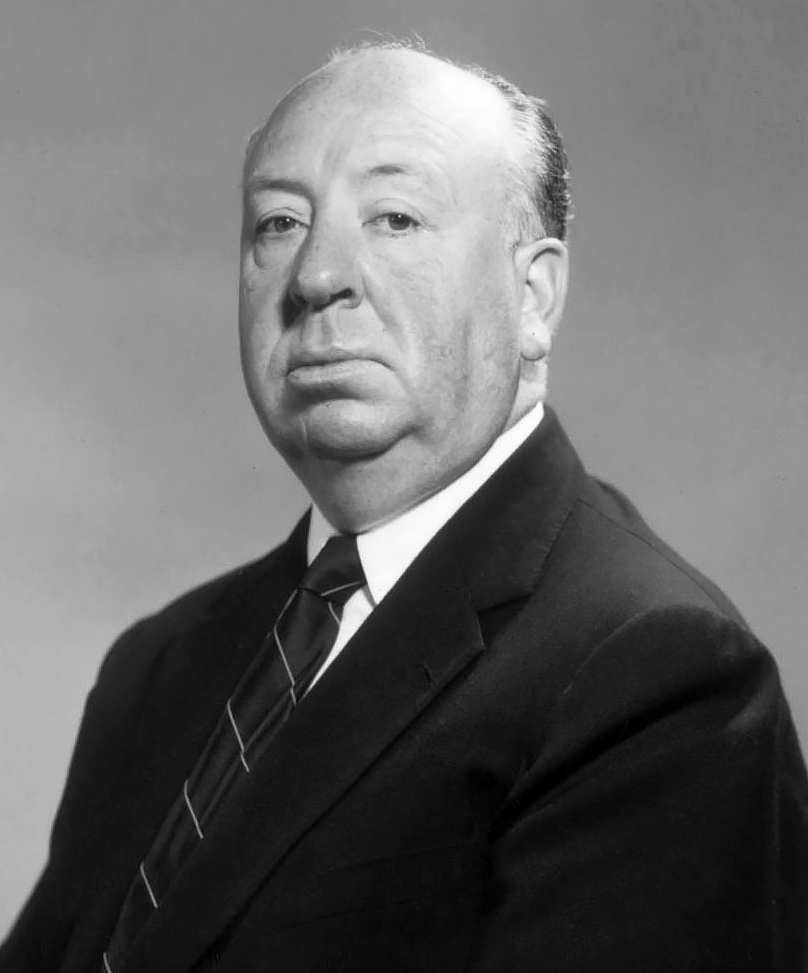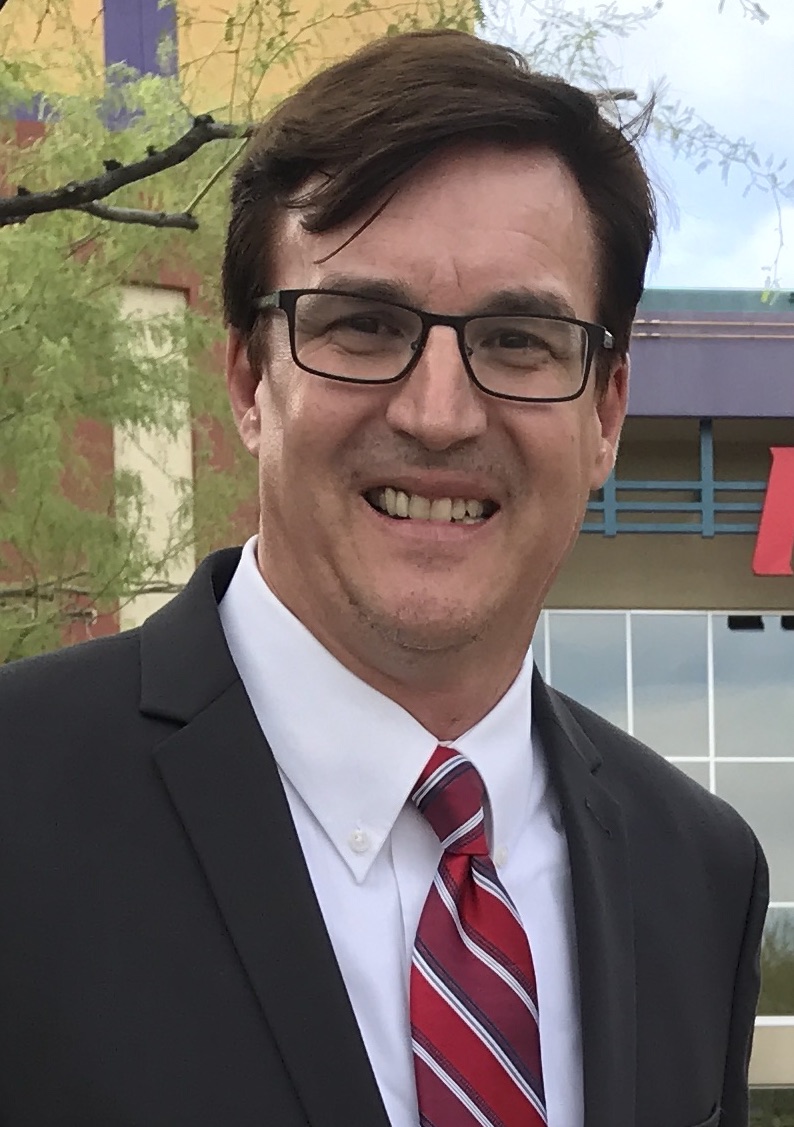Chris LaMont has been writing, directing and producing movies for over 20 years.
The clinical associate professor in The Sidney Poitier New American Film School is a self-professed lover of suspense-thrillers, so it makes perfect sense that he would be the mastermind behind the online course dedicated to the “master of suspense” himself, Alfred Hitchcock.
Alfred Hitchcock
“He is one of the most important filmmakers in the history of cinema,” LaMont said. “He is the most influential filmmaker to all the filmmakers now, like del Toro, Spielberg, Scorsese.”
From his earliest silent films, through the advent of sound, Hitchcock’s career spans six decades and boasts over 50 features. He directed movies across multiple countries and continents. His unique camera angles, long pans and editing techniques remain hugely influential today.
Any class looking to tackle this prolific director would have its work cut out for it.
“I sat down and wrote out a treatise, an 80-page script, that ended up being about 25 hours of online lecture,” LaMont said. “I understand holistically how an online class should be built and how it should be organized and how it should be academically rigorous. I’m really proud of this class. And you can only take it as an online class.”
LaMont said the most enticing element about his course isn’t just that it is rigorous and engaging.
“If you’re an online student, it’s good to have classes that check a requirement box and are fun,” he said. “I try to make (this course) as fun as possible.”
LaMont and his writing partner, Joseph Russo, have written and produced suspense thrillers for Hollywood, Netflix and Lifetime Network.
We spoke to LaMont about his love of Alfred Hitchcock, and the class he designed around the master director.
Chris LaMont
Question: What inspired you to teach a class on Alfred Hitchcock (FMP 405: Hitchcock)?
Answer: I was introduced to the work of Alfred Hitchcock at an early age watching TV and seeing his movies. Then I saw his TV show in reruns. And I read his YA book series in grade school — yes, there is one; it's called "Alfred Hitchcock and the Three Investigators," about teenage sleuths with their own agency. After that I was hooked, and he is one of my inspirations for filmmaking.
I love suspense-thrillers — not horror films, yikes! — and his influence has been part of my creative journey as a WGA screenwriter, working on several suspense-thriller screenplays, and his work still resonates with me even after repeated viewings of his films.
He's one of the greatest filmmakers ever, and when the Herberger Institute of Design and the Arts asked me if I wanted to do an online class about a filmmaker, I immediately said yes and FMP 405: Alfred Hitchcock was born. To do the class, I sat down and wrote the equivalent of an 80-page treatise on Hitchcock and that's the content that students learn today.
Q: Would you describe Hitchcock as “the master of suspense”?
A: He was definitely called "the master of suspense" for a reason, and it wasn't because he made great suspense-thrillers. It's because he understood how to direct the camera to convey suspense with slow shots and tighter close-ups, and his knowledge of editing is what makes his work stand apart from most classic filmmakers. He understood how to put the audience into the point-of-view of the characters in an almost voyeuristic way. We are seeing the action unfold through their eyes, and then he is able to manipulate emotions with camera, lighting, and sound to build up suspense.
Q: Which emotions did Hitchcock try to evoke in his audiences?
A: Hitchcock plays with emotions like fear in various ways. You aren't just afraid when scary things happen to your favorite character in a film, but also somewhere inside the audience is someone who wants to be scared. It's cathartic. But it's not just horror films. Hitchcock knows how to play with all of our emotions for a film. Emotional engagement is key to good filmmaking, and you laugh and cry and are afraid when you are in the hands of a master director like Hitchcock.
Q: What are some of Hitchcock’s enduring influences on cinema today?
A: Hitchcock's camera work was impeccable. He had longer camera shots that would build suspense. His 1948 film "Rope" was the first film that was conceived to be one giant long take. Sixty-four years later, Alejandro González Iñárritu brought "Birdman or (The Unexpected Virtue of Ignorance)" to life starring Michael Keaton doing the exact same thing — one continuous camera take.
He created the "dolly zoom," which is the camera technique where the background appears to compress around a subject, like the scene in "Jaws" where Steven Spielberg used the shot to convey the terror felt by Roy Schieder's character, Chief Brody, seeing the shark for the first time.
His editing style of what he called "pure cinema" where there is no dialogue and is driven purely by visuals, such as the shower scene in "Psycho," was unique for its time but is utilized by filmmakers all over the world today.
He was able to refine the use of rear-screen projection, like the bi-plane scene in "North by Northwest" where Cary Grant is in the studio running and the rest of the crew were on location filming the plane he’s running from.
His use of music, special effects, sound — he was able to utilize every tool in the filmmaker’s arsenal and his work influences film that we see every day.
Q: If someone could only watch one Hitchcock film, which one should it be?
A: There are a ton of films that should be seen. "Vertigo" (1958) is considered one of the greatest films in history and was recently the number one film on the Best Of list from the British Film Institute. "North by Northwest" (1959), starring Cary Grant, is basically the original James Bond spy story before there was a James Bond. "Psycho" (1962) of course was the film that broke the mold for horror films now and forever.
But I have to go with 1954's "Rear Window." Jimmy Stewart and Grace Kelly are the amazing stars for this thriller about a man confined in a wheelchair who sees a murder from his apartment. The whole film takes place in the apartment, the camera never leaves the room. It's the one film that most of my students who take the class haven't seen, and after they see it they are blown away by how good it still is 70 years later.
Hitchcock was such a good filmmaker that nearly all of his films have stood the test of time. You can't go wrong with seeing a Hitchcock film. Besides those four films, we've got five more in the class: "The 39 Steps" (1935), "Rebecca" (1940), "Notorious" (1946), "Strangers on a Train" (1951) and "The Birds" (1963). All great films that will open your eyes about a classic filmmaker whose filmography will continue to entertain audiences forever.
Top photo by Willem van Bergen from Rotterdam, The Netherlands, CC BY-SA 2.0, via Wikimedia Commons
More Arts, humanities and education

ASU+GSV Summit brings experts together to discuss advancements in education
Arizona State University President Michael Crow kicked off the ASU+GSV education technology summit in San Diego on Monday with a deep dive into the value of technology to address challenges in public…

ASU professor's project helps students learn complex topics
One of Arizona State University’s top professors is using her signature research project to improve how college students learn science, technology, engineering, math and medicine.Micki Chi, who is a…

Award-winning playwright shares her scriptwriting process with ASU students
Actions speak louder than words. That’s why award-winning playwright Y York is workshopping her latest play, "Becoming Awesome," with actors at Arizona State University this week. “I want…




